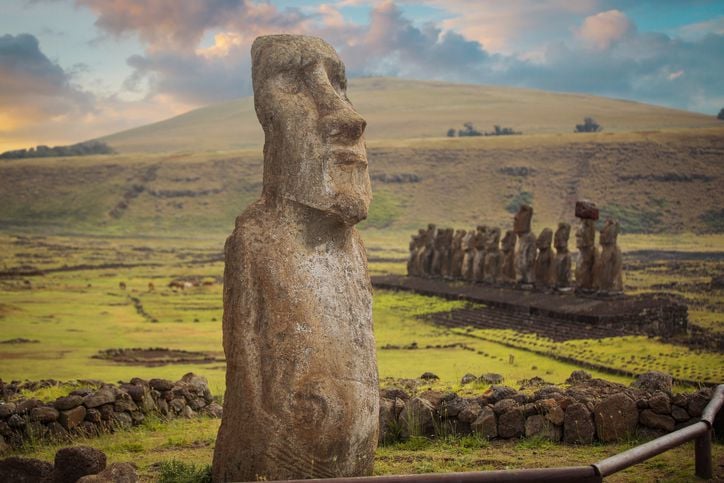As the most prolific seabird in the tropical oceans and with its extraordinary habit of staying airborne for up to five years, the Sooty tern is an intriguing bird in its own right. However, it is the significant role that it has played in the culture of Easter Island, a remote territory located over 1,250-miles (2000km) off the coast of Chile, that is perhaps the most interesting fact of all about this seabird.
Easter Island and the Birdman ceremony
Easter Island is famed for the huge, monolithic moai statues that cover large parts of its territory. Archeologist who have studied the island and believe that these statues enabled the inhabitants of the island to communicate with their gods, their ancestors and Make-Make, the creator. As such, the moai played an important part in religious worship and beliefs from the initial arrival of the Polynesian settlers to the island between 500 and 800 AD until the end of the 17th-century.
 But changes in the 17th and 18th-centuries, including over-harvesting, deforestation and depletion of natural resources, saw religious beliefs changing. As a result, the Birdman cult – in which the sooty tern would play a critical role – came to dominate as the island’s main religion.
But changes in the 17th and 18th-centuries, including over-harvesting, deforestation and depletion of natural resources, saw religious beliefs changing. As a result, the Birdman cult – in which the sooty tern would play a critical role – came to dominate as the island’s main religion.
The sooty tern and the Birdman ceremony
With the new Birdman religion, the inhabitants of Easter Island now ran a competition to select a new birdman or Tangata Manu each year, a position that supposedly made the winner sacred and able to communicate with the gods.
This yearly competition only allowed the chiefs of the various kin groups on the island to compete. Their goal was to lay their hands on the first sooty tern egg of the year, which could be found on the island of Motu Nui, around 1.2-miles (2km) from Orongo on the south western shore of Easter Island.
However, these chiefs would not personally swim through shark-infested and exceptionally dangerous waters on a ‘pora’ (a raft made of reeds) to lay claim to the first sooty tern egg of the season. No, they would send a hopu or representative to do the job for them. This person would settle into a cave on the island to wait for the first egg to be laid, during which the chiefs and the rest of the population would hold ritual dances and prayer ceremonies.
Whichever of the hopus got the first sooty tern egg would then signal across to those assembled on Orongo, thus naming the new birdman. The hopu would need to return to the main island with the egg intact before the winner was formally confirmed.
The prizes of finding the first sooty tern egg of the year
 Following his designation as the new birdman, the winner would shave his hair off and paint his head red before moving to live in seclusion for a year in a house in Rano Raraku or Anakena.
Following his designation as the new birdman, the winner would shave his hair off and paint his head red before moving to live in seclusion for a year in a house in Rano Raraku or Anakena.
But it was the birdman’s family who would reap the rewards of his victory through a series of privileges and honors. His family and kin would acquire a higher social status, allowing them better access to the island’s declining natural resources and the capacity to have a greater degree of control over the fractitious clan groups who continued to fight for authority on the island.
The decline of the Birdman cult
This competition continued annually until the 1860s, with historians believing it to have been stifled by the Christian missionaries who settled on the island in that century. Other events, such as the kidnapping of thousands of islanders by the Peruvians to work as slaves in the mines and the smallpox epidemic that left the population in 1877 at a mere 111 people, may also have played a part in the decline of this religion and the importance of the sooty tern
No comments yet
There are no comments on this post yet.





Leave a comment